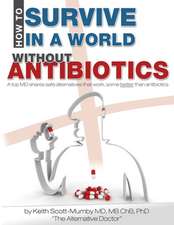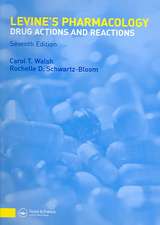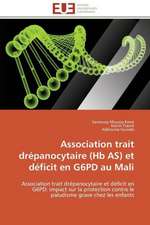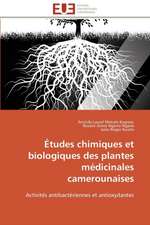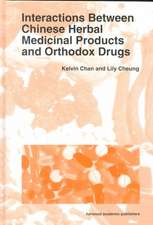American Herbal Pharmacopoeia: Botanical Pharmacognosy - Microscopic Characterization of Botanical Medicines
Editat de Roy Upton, Alison Graff, Georgina Jolliffe, Reinhard Länger, Elizabeth Williamsonen Limba Engleză Hardback – 24 mar 2011
Compiled by the American Herbal Pharmacopoeia®, this volume addresses the lack of authoritative microscopic descriptions of those medicinal plant species currently in trade. It includes an atlas providing detailed text and graphic descriptions of more than 140 medicinal plant species and their adulterants.
Designed to meet the needs of the herbal products industry, regulatory agencies, and academic researchers, the book covers plant anatomy at a level appropriate for the pharmacognostic analysis of plant tissues, provides extensive coverage of the history and importance of botanical microscopy, and gives instruction on how to set up a microscopy lab and prepare, view, and archive whole and powdered plant parts for microscopic analysis.
The botanicals covered represent 90 percent of the dollar value of botanical sales in the United States. The focus is on those species that are in high use, and those that are commonly adulterated. It also covers a number of popular Asian botanicals, providing the first English language description for many of these.
Preț: 1107.18 lei
Preț vechi: 1538.88 lei
-28% Nou
Puncte Express: 1661
Preț estimativ în valută:
211.93€ • 230.28$ • 178.13£
211.93€ • 230.28$ • 178.13£
Carte tipărită la comandă
Livrare economică 21 aprilie-05 mai
Preluare comenzi: 021 569.72.76
Specificații
ISBN-13: 9781420073263
ISBN-10: 1420073265
Pagini: 800
Ilustrații: 2101 color images and 57 tables
Dimensiuni: 210 x 280 x 38 mm
Greutate: 2.5 kg
Ediția:1
Editura: CRC Press
Colecția CRC Press
ISBN-10: 1420073265
Pagini: 800
Ilustrații: 2101 color images and 57 tables
Dimensiuni: 210 x 280 x 38 mm
Greutate: 2.5 kg
Ediția:1
Editura: CRC Press
Colecția CRC Press
Public țintă
ProfessionalCuprins
Project Overview. Product Justification. Text Organization and Design. Schedule. Editors and Authors. Reviewer and Consultant Suggestions. References. Appendices. List of Figures.
Recenzii
"This volume identifies plants by the classical method of light microscopy. Most earlier texts only listed plants used as drugs and never as extensively as the 135 economically valuable plants covered in this book. With a forward by our past DEB Norman Farnsworth, this text does an excellent job of offering adequate background on plant anatomy, diagnostic techniques, and tools of the trade. The drawings and images are very good and it is now no longer necessary to use analytical tools if one has good references such as this to identify plant powders and parts when manufacturing herbal products. This book received the James Duke Book Award from American Botanical Council publisher of Herbalgram. This microscopy text is invaluable to the natural products industry as it raises the scientific standards."
—Trish Flaster, Society For Economic Botany Newsletter, PLANTS & PEOPLE, Volume 26 Spring 2012
"… an authoritative and weighty book on the microscopic characterisation and identification of herbal medicines. … compiled by some of the leading experts in this field. In my view, this book will soon become a standard, universally accepted test in the area of pharmacognosy. Hence, this book should be on the shelves of every researcher of herbal medicine."
—Focus on Alternative and Complementary Therapies, March 2012 17(1)
"…the real strength of this text is precisely its focus on botanical microscopy. I sincerely hope this excellent volume will rekindle interest in the botanical aspect of pharmacognosy in general and botanical microscopy in particular and contribute to the revitalisation of microscopy as an important tool for the quality control of herbal medicinal products and dietary supplements."
—Hans Wohlmuth, Southern Cross Plant Science, Southern Cross University NSW 2480, Australia, in the Journal of Ethnopharmacology, 2012
"Overall, Microscopic Characterization of Botanical Medicines is a complete 'selfstarter kit.' Obviously, there are many other great resources available for those in need of more in-depth knowledge for the many topics covered in this book. But, if you want to learn about preparing botanical samples and viewing them under a microscope, gain understanding of the history of pharmacognosy and botanical microscopy, understand how the 2 fields have grown together and why all of this matters today, then this is the book for you."
—HerbalGram, 2011
"In recent years, I have feared that the botanical microscopy of medicinal plants was going to disappear because of the lack of teachers. Those who had taught it earlier were simply dying out. ... I had no idea that Upton et al, had been working so hard and so long on a book which describes not only HOW to do botanical microscopy but WHY this is so important. I opened it with joy. This excellent book fills an urgent need to re-establish the microscope as a contributory means of assessing the identity and quality of medicinal plant raw material."
—Roland Hardman, BPharm, BSe (Chern), Ph.D. (London), FRPharmS, Reader and Head of Pharmacognosy (Retired), School of Pharmacy & Pharmacology, University of Bath, UK
"… an excellent historical treatment … Roy Upton, the major driver for this work, has a long history of producing botanical monographs and his work and passion for botanicals has been clear, thorough, and accurate … the major authority on the microscopic identification of crude botanical ingredients."
—Norman R. Farnsworth, Ph.D., dr. hc (mult.), UIC Distinguished Professor, Research Professor of Pharmacognosy, University of Illinois at Chicago
"… ideal access to the method itself and to solutions of specific problems … the AHP and its director, Roy Upton, are helping to revitalize botanical microscopy as a unique, valuable, rapid, and cost-effective assessment tool."
—Professor Dr. Wolfgang Kubelka, Professor Emeritus, University of Vienna
—Trish Flaster, Society For Economic Botany Newsletter, PLANTS & PEOPLE, Volume 26 Spring 2012
"… an authoritative and weighty book on the microscopic characterisation and identification of herbal medicines. … compiled by some of the leading experts in this field. In my view, this book will soon become a standard, universally accepted test in the area of pharmacognosy. Hence, this book should be on the shelves of every researcher of herbal medicine."
—Focus on Alternative and Complementary Therapies, March 2012 17(1)
"…the real strength of this text is precisely its focus on botanical microscopy. I sincerely hope this excellent volume will rekindle interest in the botanical aspect of pharmacognosy in general and botanical microscopy in particular and contribute to the revitalisation of microscopy as an important tool for the quality control of herbal medicinal products and dietary supplements."
—Hans Wohlmuth, Southern Cross Plant Science, Southern Cross University NSW 2480, Australia, in the Journal of Ethnopharmacology, 2012
"Overall, Microscopic Characterization of Botanical Medicines is a complete 'selfstarter kit.' Obviously, there are many other great resources available for those in need of more in-depth knowledge for the many topics covered in this book. But, if you want to learn about preparing botanical samples and viewing them under a microscope, gain understanding of the history of pharmacognosy and botanical microscopy, understand how the 2 fields have grown together and why all of this matters today, then this is the book for you."
—HerbalGram, 2011
"In recent years, I have feared that the botanical microscopy of medicinal plants was going to disappear because of the lack of teachers. Those who had taught it earlier were simply dying out. ... I had no idea that Upton et al, had been working so hard and so long on a book which describes not only HOW to do botanical microscopy but WHY this is so important. I opened it with joy. This excellent book fills an urgent need to re-establish the microscope as a contributory means of assessing the identity and quality of medicinal plant raw material."
—Roland Hardman, BPharm, BSe (Chern), Ph.D. (London), FRPharmS, Reader and Head of Pharmacognosy (Retired), School of Pharmacy & Pharmacology, University of Bath, UK
"… an excellent historical treatment … Roy Upton, the major driver for this work, has a long history of producing botanical monographs and his work and passion for botanicals has been clear, thorough, and accurate … the major authority on the microscopic identification of crude botanical ingredients."
—Norman R. Farnsworth, Ph.D., dr. hc (mult.), UIC Distinguished Professor, Research Professor of Pharmacognosy, University of Illinois at Chicago
"… ideal access to the method itself and to solutions of specific problems … the AHP and its director, Roy Upton, are helping to revitalize botanical microscopy as a unique, valuable, rapid, and cost-effective assessment tool."
—Professor Dr. Wolfgang Kubelka, Professor Emeritus, University of Vienna
Notă biografică
Roy Upton, Alison Graff Georgina Jolliffe, Reinhard Länger, Elizabeth Williamson
Descriere
Compiled by the American Herbal Pharmacopoeia®, this volume provides a detailed text and graphic atlas of more than 140 medicinal plant species and their adulterants. Focusing on those species in high use and commonly adulterated, the book covers plant anatomy, provides extensive coverage of the history and importance of botanical microscopy, and gives instruction on how to set up a microscopy lab and collect samples. This reference offers the first English language description for many commonly used species.




